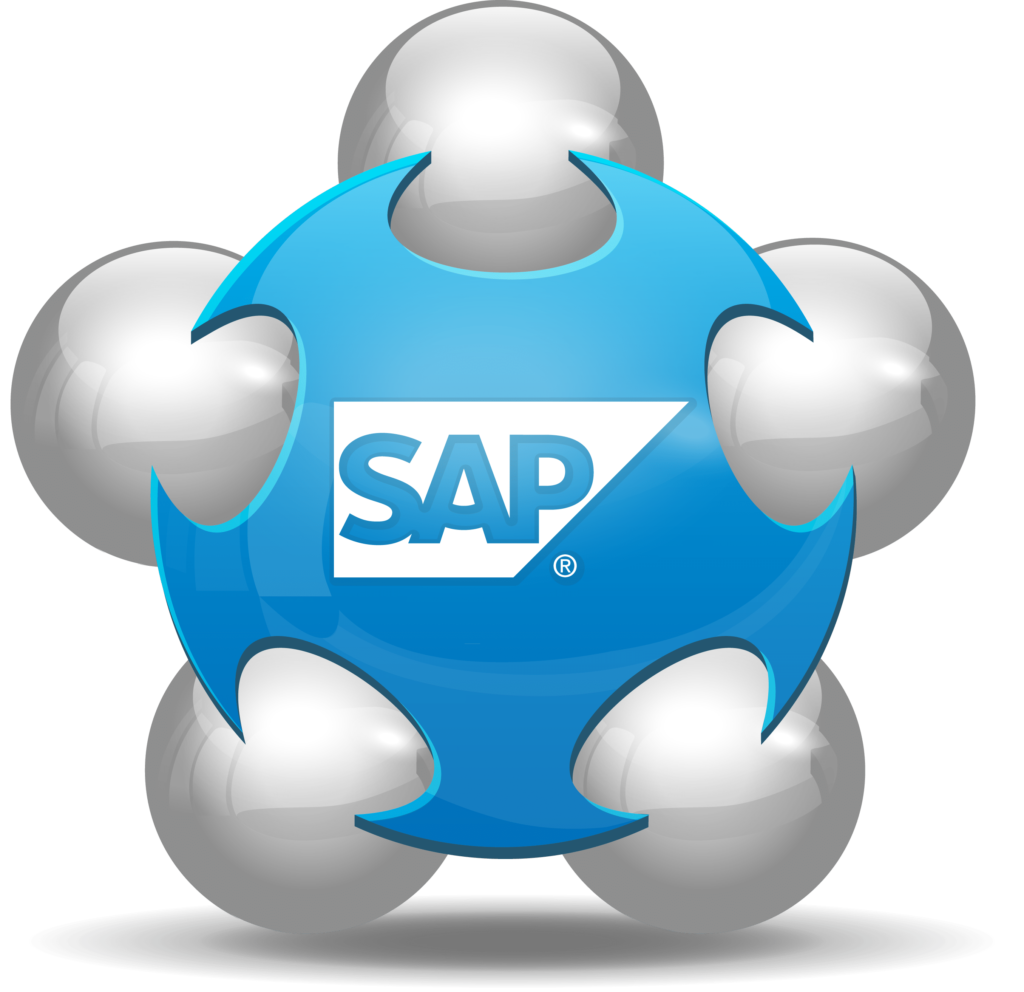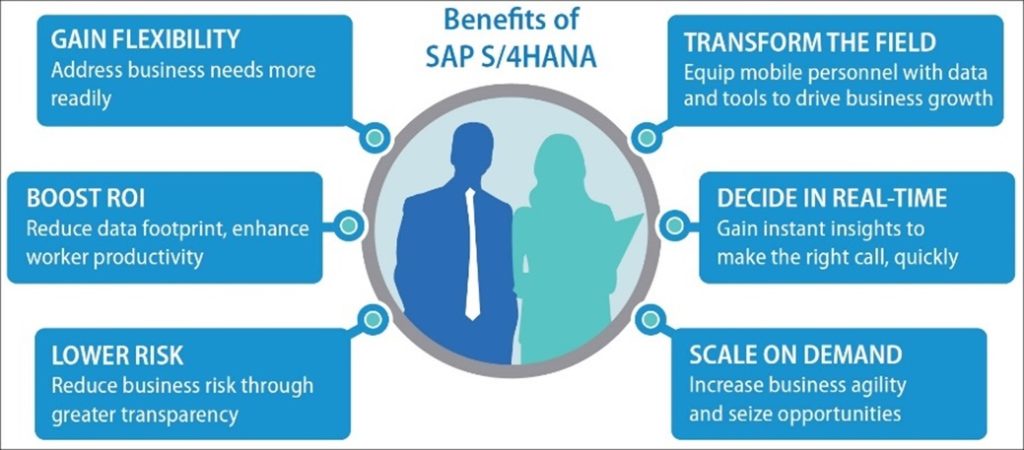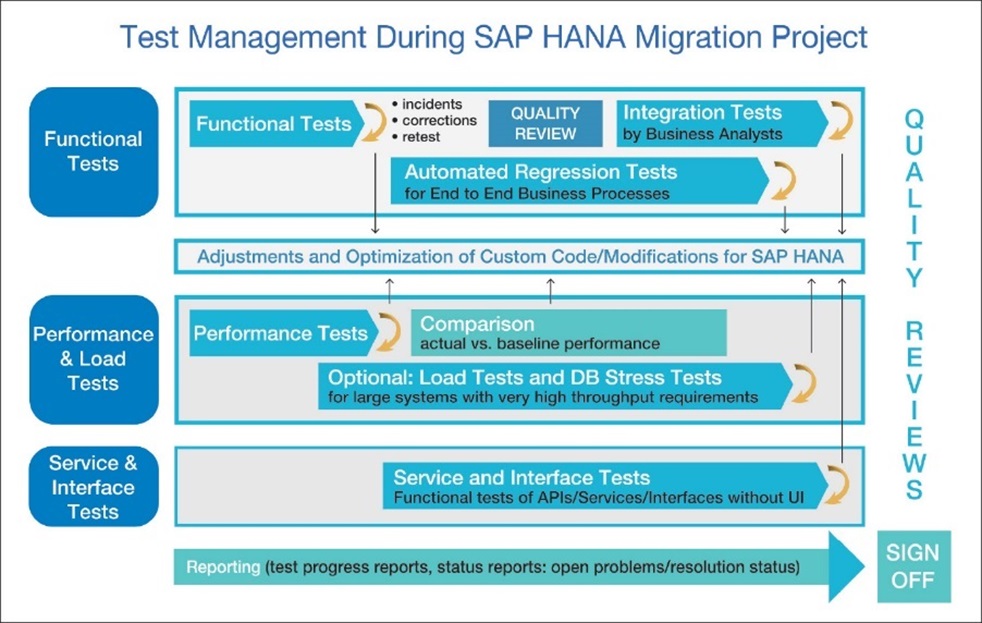 When SAP unveiled SAP Business Suite 4 SAP HANA (S/4HANA) in February 2015, the release marked a major leap forward for enterprise resource planning (ERP) tools. With this innovative computing platform, SAP released sweeping improvements that dramatically accelerate the visibility and usefulness of business information for enterprise decision making and positive change. Benefits of the new platform were legion, including:
When SAP unveiled SAP Business Suite 4 SAP HANA (S/4HANA) in February 2015, the release marked a major leap forward for enterprise resource planning (ERP) tools. With this innovative computing platform, SAP released sweeping improvements that dramatically accelerate the visibility and usefulness of business information for enterprise decision making and positive change. Benefits of the new platform were legion, including:
- Lower cost of ownership (up to 37 percent savings in hardware, software, and labor costs, per SAP).
- Dramatic speed improvements and streamlined, near-effortless workflows for business data entry and access.
- Complete flexibility in harnessing, visualizing, and consuming data—from simple dashboards to complex “what-if” scenarios and business simulations.
In conjunction with the excitement that surrounded the release, news began to surface that suggested S/4HANA could be excessively complicated for enterprises requiring a migration—especially those upgrading from legacy versions of SAP. As a result, some business leaders indicated they were hesitant to migrate to the new platform.
Although we do not deny the complexity of an S/4HANA migration can appear daunting, taking a realistic outlook toward the project, conducting careful advance planning, and engaging in thorough migration and testing can sharply mitigate the chances of failure. In every instance where our consultants help SAP firms migrate to or deploy S/4 HANA, the benefits of the resulting platform with a thoroughly tested, fully functional deployment were well worth the extra effort.
S/4HANA: A Transformative Undertaking
S/4HANA migration is complicated, not due to process flaws or platform shortcomings but rather because the product is truly ground breaking. S/4HANA offers features that were never before available in SAP, such as on-demand data visualization and delivery with support for user-customized views. Reporting is greatly streamlined and accelerated, with powerful dashboards and drill-downs being available on the fly and even custom reports running in minutes rather than hours.
To achieve these improvements, SAP developed a powerful new database engine, with a newly architected, simplified database structure, and completely reengineered the product’s workflows. SAP also introduced SAP Fiori, a mobile-centric GUI (graphic user interface) that makes it easier and faster for enterprise personnel to request, visualize, and consume business data from any device, anywhere, and at any time.
As a result of this comprehensive redevelopment, any modifications, extensions and add-ons that organizations previously implemented in SAP will likely be outdated or even obsolete. For many firms, this may feel like “going back to the drawing board,” and in some ways, it is. The more customizations an organization has made over time, the longer it will take them to recode and reapply them.
Nevertheless, the core S/4HANA platform will be so much faster, more powerful and more flexible than previous versions that organizations may find they do not need all their prior customizations. Furthermore, the product is designed so that staged deployment is possible. (Objective outside resources, for organizations that hire them, can be very beneficial in deciding how to effectively spread the effort out across several phases, if necessary.)
It is far better to have a properly managed and executed partial deployment, and/or to defer adoption and testing of less-important features such as reports, than to attempt to launch without thorough migration/updates of test cases and test assets—and rigorous testing of core elements.
Enterprises leaders who are concerned about complexity should recognize that organizations in every industry are migrating to S/4HANA every day without having their projects become bogged down by complexity. Consider these mitigating factors:
- SAP has taken great care to provide self-service tools and other enablers that help ensure functionality at a fundamental level.
- Organizations without the in-house manpower or know-how to effectively plan and execute migration and testing can improve outcomes by hiring outside assist Selecting a firm with a strong quality focus and significant SAP testing experience will boost the chances of success.
- Beyond the core migration, many aspects of S/4HANA—including the SAP Fiori GUI—can be phased in over a period of time, allowing enterprises to move forward at their level of comfort.
- At the present, SAP has released only the three most in-demand modules (finance, sales, and logistics). Organizations can adopt these sequentially, at their own pace, and then add new modules when they are available or as resources permit.
Admittedly, the sooner companies embrace SAP Fiori and other transformative elements of S/4HANA, the more they will gain from the platform. However, a hybrid migration is fully possible and can continue for a long period of time.
Navigating a Successful Migration
In our experience, organizations migrating to S/4HANA from an earlier SAP implementation will have the best results if they plan from the outset for a significant migration effort. As mentioned earlier, deployment problems and complexity can be minimized with careful migration planning and execution, paired with extensive functional, performance, and security testing (plus mobile and user experience testing if appropriate). Following are some of the recommendations Orasi shares with its customers when working on S/4HANA migration projects.
Before beginning the implementation, the existing implementation should be updated, preferably to the latest version of SAP HANA, but at least to a version of SAP that supports SAP HANA. This may require several iterations of the project. During that process, teams will need to identify, document, and test all affected business processes through each iteration.
Firms that have not yet adopted automation should consider doing so during this early phase. Using automation to document and validate business processes can reduce upgrade project time and costs by 50 percent or more, compared with manual approaches. The resulting automated tests can also be reused across all implementation and maintenance projects that follow.
After all updates are complete, test and validate former test cases and business processes in the updated platform and then adjust accordingly. This will create a baseline from which teams can more readily identify testing deficiencies, post-deployment.
After deploying S/4HANA, evaluate and test the core system (unit, functional/integration and performance), using masked data generated from the existing production data set. Make any necessary adjustments for tests to pass before proceeding.
Retest test cases and business processes in S/4HANA, adjusting as necessary for testing success, before applying any company-specific modifications and extensions.
Update test plans as necessary. Adjust time and capacity estimates to account for the presence of constant changes and updates. If the organization is deploying SAP Fiori, develop new tests for mobile and user experience next. Then, evaluate and develop tests for new features and automations.
If all testing activities have been completed within the pre-defined parameters for success, move forward with incorporating earlier customizations and add-ons, either as a single project or a phased effort over time.
Adding customizations back into the system may require significant code updates. At the minimum, test cases and business processes may need to change, and robust functional and performance testing will need to take place.
Final Analysis
At the S/4HANA launch, SAP CEO Bill McDermott stated, “Today, SAP is redefining the concept of enterprise resource planning for the 21st century. SAP S/4HANA is about uniting software and people to build businesses that run real-time, networked, and simple.” More than a year later, thousands of organizations are realizing these benefits.
At Orasi, we believe that SAP S/4HANA and its on-demand, mobile-optimized big data analytics can transform how companies visualize, consume, and act upon their data. Over the long term, we predict it will foster a data-centric culture that drives business innovation and spurs greater productivity.
To achieve the most possible benefit and curtail the risk of a failed migration or deployment, teams must ensure that the underlying structure for SAP HANA is developed and implemented correctly and that all operations are thoroughly tested, before launch, to confirm they work smoothly. Following the best practices migration suggestions we have outlined in this blog will start them on the road to meeting those goals.
Author’s Note: Orasi has developed a white paper, “SAP Business Suite 4 SAP HANA: The Benefits of a Test-Driven Deployment,” that is available on our website. It goes beyond outlining the migration issues discussed here to offer tips on testing as well as a deeper dive into S/4HANA, including the Fiori GUI. To view and download that and any of Orasi’s technical papers, click here.